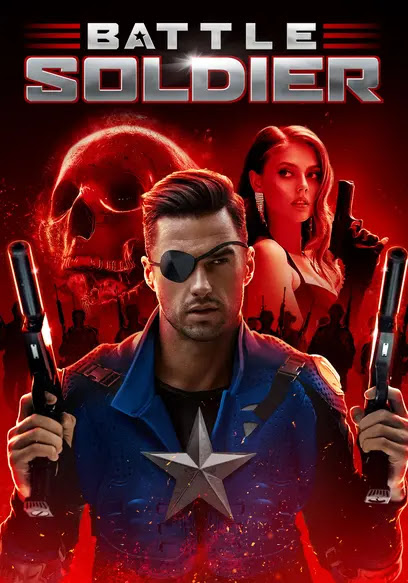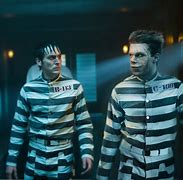PHENOMENALITY: *marvelous*
MYTHICITY: *fair*
FRYEAN MYTHOS: *irony*
CAMPBELLIAN FUNCTION: *psychological*
I've long put off reviewing THE SPIRIT, because it's difficult to talk about the process by which a Good Artist seeks to adapt the work of another Good Artist and ends up producing Bad Art.
When the movie debuted in 2008, most of the fan-reaction was negative. Will Eisner's SPIRIT-- a specialized type of comic book that ran for a little over ten years, from the early forties to the early fifties-- had started out as a straightforward adventure-strip about a domino-masked vigilante in the pre-war period. But what most SPIRIT fans favored was Eisner's so-called post-war period, when Eisner began utilizing his formidable gifts to focus on the literary forms of drama and comedy.
In contrast, Miller hit the big time in the later eighties and the rest of the nineties with a variety of works-- DAREDEVIL, 300, SIN CITY, and two major Batman projects-- which all fit the form of adventure. (Elsewhere I've argued that ELEKTRA ASSASSIN best fits the form of the irony.) Miller often stated his admiration for Eisner, and the two artists were friends up until Eisner's passing in 2005. Because of these factors, I believe that Eisner-fans expected that Miller, when he wrote the SPIRIT film, would seek to emulate some aspects of the drama-and-comedy stories that the fans had esteemed.
This was, to put the matter mildly, a false expectation; there was no way that Frank Miller, master of comic-book ultraviolence, was going to follow the sort of low-key SPIRIT-stories those fans wanted. Yet, all that said, I found my own experience of the 2008 movie left me less than enthused with the result.
The problem I see in Miller's adaptation is that since 2001-- the year that he came out with a fifteen-years-later sequel to THE DARK KNIGHT RETURNS-- the artist became increasingly fascinated with the form of irony, which stresses a type of dark, potentially nihilistic humor. This YouTube video by one Salazar Knight puts forth a detailed analysis of 2001's THE DARK KNIGHT STRIKES AGAIN in which he argues that this limited series hugely disappointed Batman-fans because Miller delivered not a respectful take on the Bat-mythos, as had the 1986 KNIGHT, but a wild and confused parody of the superhero genre as it had developed in the 1990s (at least partly in response to Miller's influence). I won't pursue Salazar's argument in detail, but I believe that Miller had analogous motives in his approach to adapting Will Eisner's SPIRIT.
By 2008 Miller had accrued great Hollywood repute thanks to the successful 2005 adaptation of his 1990s SIN CITY stories. These stories, while not without moments of acerbic humor, were dominantly adventurous film noir narratives. Miller thus got the nod to write and direct THE SPIRIT on the strength of the SIN CITY movie's success. However, since 2001 Miller's creative priorities had changed.
If my terms for literary forms might seem a bit abstruse, I might also cite some better-known terms for the differing ways that Eisner and Miller treated humor. Eisner's SPIRIT hews closest to what film studies call "the screwball comedy," where the humor's very light and sprightly. But Miller's SPIRIT piles on overbaked noir-tropes so heavily that he creates a self-aware burlesque of the genre. When the film starts out with the hero (Gabriel Macht) leaping about the rooftops of Central City, fantasizing that to him the city is like a "good mother" that does not paint itself like a gaudy hooker (I forget the exact wording), clearly Miller's head is in a different place.
Technically Miller keeps the skeletal of a dramatic Eisner plot, from an early 1950s storyline in which the crimefighter met a long-vanished girlfriend, Sand Saref (Eva Mendes in the film), who showed up in Central City as a part of a new crime-scheme, thus setting up the conflict of the two former lovers. Miller had used elements of the "Sand" story for his "origin of Elektra" tale, and so it was perhaps natural enough that he would choose the same narrative for the SPIRIT film. And to the extent that the movie even comes close to an Eisner original, Miller's script is moderately faithful.
However, everything else is Looney Tunes. In the Eisner story, Sand came to the city seeking to sell a germ-warfare weapon, and something similar happens in the film's first half-hour. However, the Spirit is alerted that his frequent enemy the Octopus (Samuel L. Jackson) has some scheme going on. So when the hero shows up at Sand's entry-point, he's attacked by Octopus, who engages Spirit in a furious battle that culminates in the villain slamming an old toilet over the hero's head.
How does the hero survive? Well, Eisner frequently showed his vigilante protagonist getting the tar beat out of him, but in a loosely realistic manner. But Miller was hugely invested in ultraviolence, so he reworked both Spirit and Octopus into Wolverine-like beings able to heal rapidly from massive injuries. This rewriting was also Miller's way of justifying the hero's reason for calling himself "The Spirit," because he literally died but came back to life due to a super-serum. He even talks to a death-spirit named Lorelei (Jamie King), whose voice is heard only by "sailors and cops," and who continually bids him to return to her "cold embrace."
Octopus fails to get the item Sand brings to Central City, despite being aided by Doctor Silken Floss (Scarlet Johansson) and her crew of identical goofball clones. (The "Silken Floss" in the comics was not a villain, incidentally.) But I'll give away what the movie doesn't reveal until the last hour: Sand hasn't smuggled in a germplasm, but "The Blood of Heracles," which is supposedly the genuine blood of the Greek demigod. Octopus-- who seems to be the only person interested in this prize-- thinks that if he drinks this substance, it will transform him into a god who can conquer the world.
Yes, we're a long way from film noir here. And to keep up the Looney Tunes mood, Miller constantly gives almost every character bizarre lines, ranging from Floss making some comment about drugs that make people's "teeth turn into graham crackers" to Octopus frequently ranting about "eggs" for unknown reason. Next to some of these gems, the hero's soliloquy to the city almost sounds rational.
While the Spirit chases around trying to track down both Sand and Octopus, he's frequently waylaid by such beautiful women, where they're femmes fatales like Sand and the dancer "Plaster of Paris," or relatively good girls like Ellen Dolan (Sarah Paulson). In the comic she's the hero's faithful girlfriend, and here she's upgraded to a doctor who constantly cares for his wounds but is no less motivated to hogtie the vigilante to her alone. In fact, one of the few worthwhile things about Miller's version of the Spirit is that the crimefighter can't seem to turn off the charm when in the presence of hot women. Certainly, the hero's sex appeal works better than any of his exaggerated athletics.
Macht is decent in the role despite its problematic concept, and most of the actors deliver what Miller wanted of them. But Samuel L. Jackson is awful from start to finish. Perhaps he justified his wild histrionics with the idea that he had to be "the over-reactor" to Macht's "under-reactor," but he unlike other performers seems to relish all of Miller's absurd dialogue.
It's amusing that Miller somewhat name-checks his own creation by having a lady cop claim that Sand Saref suffers from an "Electra complex." However, the Spirit would seem to suffer from the opposing Oedipus complex, for instead of choosing any single female with whom he might "settle down" and protect, he devotes his existence, both at the opening and closing, to the Great Mother of the City. Some of these loose insights are what makes Miller's SPIRIT into "bad art," and not just your average "bad movie."


















